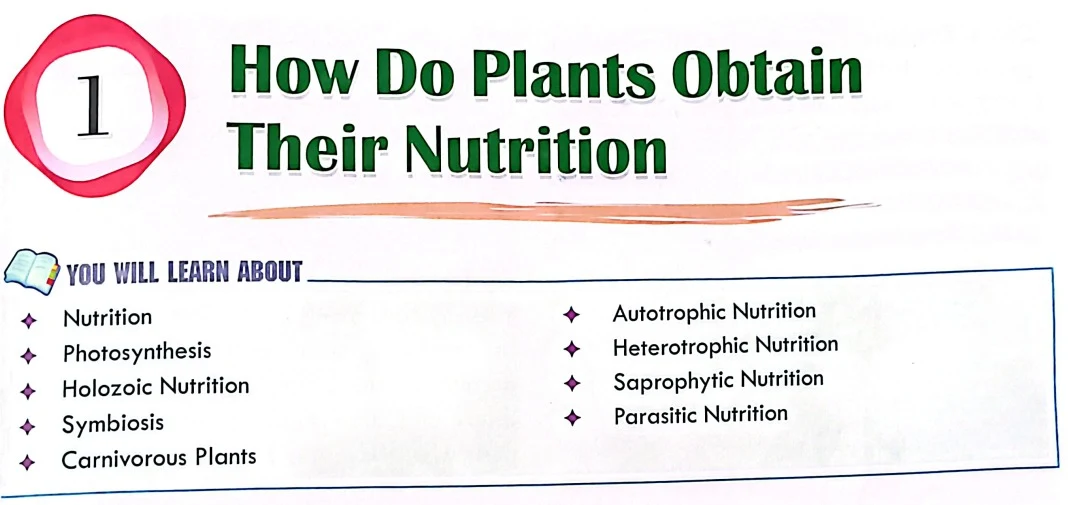Nutrients
➥ Nutrients: Groups of food that include proteins, fats, vitamins, and minerals.
➥ Nutrition: The process of taking in and using nutrients like carbohydrates, fats, proteins, minerals, vitamins, and water by an organism.
Modes of Nutrition
⟹There are mainly two types of nutrition:-
Autotrophic Nutrition
- ➥ The word "auto" means self and "trophic" means nutrition. Thus, autotrophic means self-nutrition.
- eg:- Green plants.
- Photosynthesis:
➥ Photosynthesis is how green plants make their own food using sunlight. They use a green substance called chlorophyll to turn carbon dioxide and water into glucose (sugar) and oxygen.

- ⟹ Process of Autotrophic Nutrition:
➥ Absorption of light energy by chlorophyll.
➥ Conversion of light energy to chemical energy and splitting of water molecules into hydrogen and oxygen.
➥ Reduction of carbon dioxide to carbohydrates.

➥ Organisms prepare their own food. They are known as autotrophs.
Heterotrophic Nutrition
- ⟹ Types of Heterotrophic Nutrition:
- 1. Saprotrophic Nutrition:
- ➥ The word "sapro" means rotten.
- ➥ Obtaining food from dead and decaying matter.
- eg:- Mushroom, yeast, bacteria.....etc.
- 2. Parasitic Nutrition:
- ➥ Obtaining food from a host organism without killing it.
- eg:- Cuscuta (Amarbel), tapeworms, lice.
- 3. Holozoic Nutrition:
- ➥ Taking in solid food and digesting it.
- eg:- Humans and most animals.
- Types of Holozoic Nutrition:
- (i)Herbivores: Animals that eat only plants. eg:- Cow, deer.
- (ii) Carnivores: Animals that eat other animals. eg:- Lion, tiger.
- (iii) Omnivores: Animals that eat both plants and animals. eg:- Humans, bears.
- Symbiosis:
- ➥ Symbiosis is a close and often long-term interaction between two different biological species.
- eg:- Lichen (an association between algae and fungi).
Note:-Detritivores: Animals that feed on dead organic matter. Example: Earthworm.
- 1. Saprotrophic Nutrition:
➥ Organisms depend on other organisms for food.
➥ eg:- animals, fungi, and some bacteria.
- ⟹ Types of Heterotrophic Nutrition:
Stomata
➥ Stomata are small openings on the leaf surface that allow gas exchange (CO2 and O2) with the atmosphere.
➥ They enable the evaporation of water from the leaf surface, which helps in transpiration.
➥ Stomata also allow the intake of carbon dioxide and the release of oxygen during photosynthesis.







0 Comments